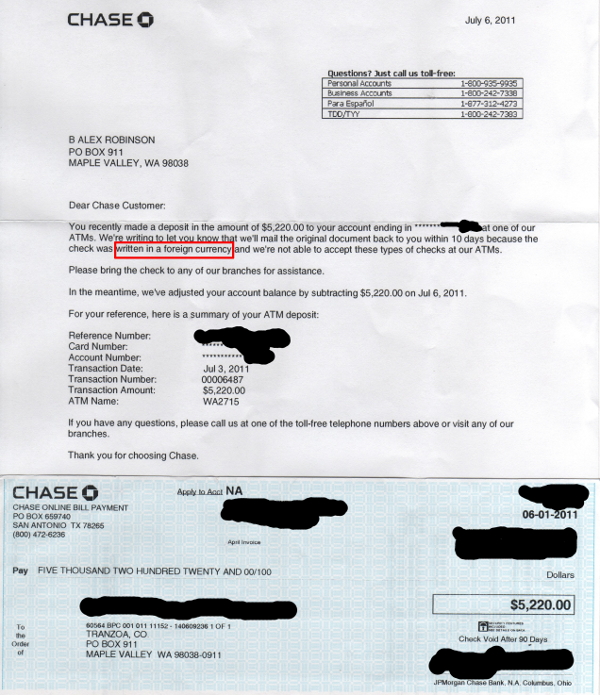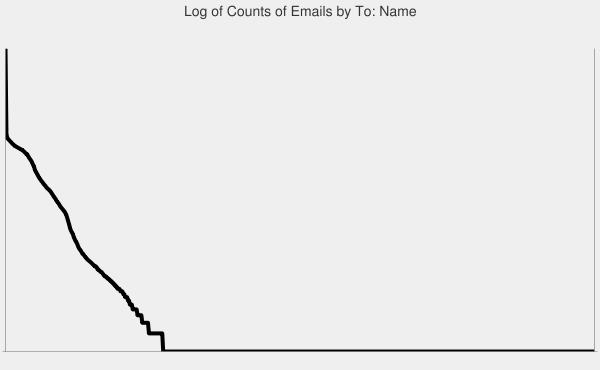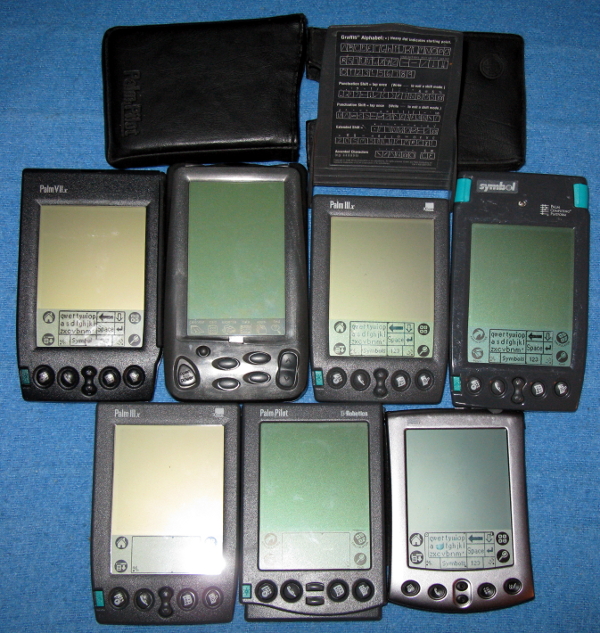The seagull.
Category Archives: Bloggy Things
Good bye, old friends
Chicken the Daddy way
Scott threatened to publish this email unless I did first. It was in answer to his IM’d question about how I had made chicken for a church pot-luck we went to one evening back when S&S were mid-sized munchkins. The chicken went fast. Which was kinda funny, given my, uh, homemaking skills. Especially, compared to the competition. So…
OK, Scott, yeah, I remember that chicken thing and the church pot luck or sleepover or whatever.
And, the way that chicken was made is a method I learned from Trudi. Probably straight out of the South. Haven’t made chicken like that for years. Always just toss it in the oven and bake it now – like right now, as we speak.
Anyway, the method is to simply put some flour mixed with random spices in a paper bag, toss the chicken pieces in – might be easiest a couple pieces at a time – and shake. Shake and bake is an actual grocery store product that probably does this. Idea is to get the chicken completely covered by the spicy coating. The flour takes care of the “completely” part of that requirement.
Then, heat up some oil – I forget what kind I used, but it could have been olive oil. It could have been a mixture, seeing as how I have always had several types of oil. Lot of oil. I am not sure that the oil doesn’t cover the chicken in the pan. But probably not completely. So you must flip the pieces at least once. This stuff wasn’t deep fried. I used the iron pan I got for 7 bucks when I was at Evergreen. Best 7 bucks I ever spent. I really appreciate iron. Iron has great heat sink action, too, so the oil doesn’t cool down when you toss the chicken in. You may need to flow the chicken through the pan and oil if you have a lot of chicken, BTW. Not too much chicken cooking at one time.
The oil must be hot. Otherwise it will saturate the coating, if not the chicken.
The chicken will really splatter if there is any liquid on it, which the flour pretty much takes away. But the pan has a cover to help with splattering. Also, the cover keeps the heat in while it’s cooking. Which doesn’t take too long, but it’s gotta be cooked all through, of course. I forget how long it took. Experiment using consistent temperature, amount of oil/chicken to predict in future. Just slice half way in to the biggest piece every so often to see what’s up.
Tongs are needed to handle the chicken – putting in and taking out of pan. Otherwise when you put it in, you’ll splash that oil all over and maybe burn the bejeezus out of your hand. Only alternative to tongs for taking it out is a fork, and that’s kinda bad ’cause it puts big holes in the chicken. Also, tongs might be longer than a fork. Safer.
And that’s it.
What spices?
Well, I pulled ’em at random. Used to use rosemary, maybe a lemon pepper, “spicy pepper” (a spice in the stores here), garlic pepper. Maybe back then I used cayenne. Certainly would now. Let me look at the cupboard. … … … Yeah. Thyme, basil, allspice, ginger … Hell, “parsley, sage, rosemary and thyme”. Here’s to you, Mrs. Robinson.
Whatever spices that say on the side of the bottle that they are for poultry.
Cayenne, by the way, can be slathered on before cooking compared to how much you need at eat-time. Cooking mellows cayenne out a lot.
Most of those “peppers” have salt in them, but you gotta have enough salt. People love salt.
Also, you can’t cook sugar ’cause it burns. I think that’s why the top ramen spice thingee is put in after the noodles are cooked. Sugar is the secret ingredient in top ramen, it turns out. If you fake your own top ramen flavor packet and leave out the sugar, you’ll be disappointed. Anyway, you might be able to toss sugar in some time in the process. Try it from the top to see if it doesn’t burn. Whatever. Sugar, like salt, always sells.
Oh, and you can use more than 1 paper bag, with different assortments of spices.
Feed it to only hungry people.
Dad
Does Chase Bank know something we don’t?
A trip to the post office found some mail from Chase:

Amid the dysfunctional noise coming from the East, one has to wonder: Do our financial overlords know that the country south of Seattle will no longer be using dollars from Federalreservistan? Go long tin foil! We’ll need quite a lot of it on our heads to explain why Chase thinks their own check is in “a foreign currency”.
That all said, it’s an unremarked wonder that ATM machines can handle a bunch of random checks with little fuss or muss. That technology is yet another modern miracle. To avoid this sort of goof, though, I would suppose that they could digitally sign the data from the check and put the data and sig on the check in OCR-able form.
I’m really not a Fed basher
There seems to be a general consensus out there that QE2 was the US Federal Reserve “printing money” to buy T-bills.
I wondered about that.
So I looked at what the Fed has to say in their FAQ entry for “Is the Federal Reserve printing money in order to buy Treasury securities?” at http://www.federalreserve.gov/faqs/money_12853.htm.
Well, the first word there is very clear: “No.”
But then they say that:
The term “printing money” often refers to a situation in which the central bank is effectively financing the deficit of the federal government on a permanent basis by issuing large amounts of currency.
Ah. Well, “printing money” may “often refer” to whatever straw man one wishes. But that doesn’t answer the question. Furthermore, when they explain what they actually do, they go vague and, one can’t help but think, purposely obfuscatorial.
Suspicions, after all, can’t help be be raised when the amount of QE2 pretty closely matched the US government’s deficit.
So, here’s the way I read their FAQ entry:
We don’t print money. We just give our computers bigger numbers. That’s not “printing.”
And, if it is, we are really not printing the money, we’re buying T-bills, which other people can buy, albeit at higher prices. And, since we’re buying T-bills, we’ll eventually get our money back, so we didn’t “print money.” We only loaned money we didn’t have until we made it by magic. And we expect to get it back and then throw that money away. So the money wasn’t permanently “printed”. So it wasn’t printed.
Well, I don’t believe they ever will throw that money away. But let’s examine the situation if they do:
I print some Ben Franklins.
I loan them to you.
In a few years you pay me back.
I burn the bills you pay me back with.
Did I “print money?”
Why, “No!” says the Fed.
But all this isn’t particularly interesting.
What’s interesting is this FAQ entry is from the world’s premier central bank. This blundering lie is the state of the financial industry’s art!
Now, the “industrial” world has recently been going through a great transition. Despite what a recent spate of political axe grinding says, there has been and continues to be a tremendous broadening of ownership of stored wealth, Statistics on percentages of US people who own stocks are telling. 50 years ago no one owned stocks. Now most people own stock – if largely indirectly.
And, the financial industry is still run as if it’s 50 years ago.
Because they can.
Consider how many people in the US have interests in funds that have a house rake of over 1%. … Per year.
But why would people pay that kind of rake? Almost anyone can make their own mutual fund – an index fund – for nearly 0% overhead. Simply buy 20 or 30 stocks and hold them. Heck, just buy the Dow Industrials if picking a random 20 or 30 stocks is too hard.
As it is, though, there are billions of dollars being paid for slick brochures and a few peoples’ high salaries.
This is a field begging for disruption.
Correlation fun
Google recently put a thing called Google correlate up in their labs.
You enter a query and it finds other queries whose volumes correlate with your query in time. If your query has spikes at different times since 2003, then in practical terms, Google correlate finds other queries that spiked at the same time.
Fine.
The fun part is that you can shift your query in time. If, say, you shift your query by -37 weeks (a pleasant prime number not very near any natural time cycle), you can find other queries that ebb, flow and spike 37 weeks after yours.
OK.
So, try “osama bin laden” shifted -37 weeks.
The results: Three “aim 5” queries and “best dvd rentals”.
Coincidence? You decide.
My first geocache
It was a sloppy job. Got kinda cold and wet up there. But I left my first geo-cache at the top of a hill, bushwhacked up from Bear Gap. It is one of the old ammo boxes from 25 years in the garage wrapped in reflective tape.
http://www.geocaching.com/seek/cache_details.aspx?wp=GC2EACX
And invented a new art form – web site coming soon … maybe … someday.
Behold, the “LimeriKu”:
There once was a gap named Bear,
who had a cache 6 thou in the air.
The cache it did shine
by flashlight at nine.
The car … … without spare.
Poetic license, ho!
Media numbers and crowd estimates. Always a gas.
The media is famously innumerate. And, credulous with numbers.
So, when I read crowd estimates of yet another march on Washington – this one headed by a recent celebrity, Glenn Beck, I got curious.
The media, no friends of Beck, had the numbers slightly under 90k. Beck people seemed to like 4 or 500k.
That seems like enough of a difference to check without a lot of trouble.
So, here is the best picture I could find of the crowd as a whole:
Original link to slightly larger image:
http://www.therightscoop.com/wp-content/uploads/2010/08/bigcrowd.jpg
One of the odd things that struck me was that there were so many photos of parts of the crowd and area, but none of the whole thing. I imagine it’s hard for political-security reasons to get a plane up in that area, but, golly, where are the raw images and wide angle lenses?
Anyway, from this and other pictures you can do a quick guesstimate by simply figuring everyone is packed in the areas to the north and south of the reflecting pond, from the Lincoln Memorial to the WWII Memorial.
And that area is easy to measure. Google Earth’s ruler has it about 250 feet wide to the north and about 650 feet wide to the south. That includes the area under the trees near the pool. And, it includes a couple hundred, under-tree feet on the south.
The pool is about 2000 feet long. So, we’re talking 900*2000=1,800,000 square feet.
Divide that area up in to 18,000 cubical-sized, 10 by 10 foot tiles. Put 4 people in each and you’ve got 70k people.
OK. This is a really, really rough count. What’s wrong with it?
- It doesn’t count people outside this big rectangle.
- It doesn’t count people who came and went before or after the photo was taken.
- 4 people per 100 square feet? Let’s up the density a bit, eh?
#1: With regard to outsiders: Yes, this skips everyone right at the Lincoln and those people in the picture’s foreground on the hill to the west of Washington. But, I figure that they all can be moved to relatively empty spots in the big rectangle. The crowd’s kinda sparse in the southeast. There seems to be a sparse area half way down on the south side. Anyway, we’re talking percentage differences here. Nothing to write home about. Density estimate inaccuracies dwarf the outsider effect.
#2: Time? I’d have a hard time believing that the total crowd for the day would be more than, say, 50% higher than a high-crowd snapshot. The original .jpg doesn’t have any useful EXIF information, by the way, so I’m assuming that it’s close to high-crowd time. Other, on-the-ground photos don’t seem to refute this notion.
#3: Density. Yes, there’s the nub. If you make it a really tight crowd, then you could quadruple the density. (Double density, that is, causing 4 times as many people to be counted.) But, that’s getting the whole crowd in to some pretty serious intimacy. No room for lawn chairs and coolers. Anyway, taking in to account camera angle and telephoto lens effects for the on-the-ground photos, I’m wondering whether 4 people per 10^2 is a wee bit high. But, even if it is, I figure throwing the outsiders in to the big rectangle will make up for it.
Bottom line on this guesstimate: 60 to 100k people.
Oh. And one more count for that hippy girl in the pool shouting, “Forest!”.
Spammers distribute emails to addresses by Pareto’s law
I’ve got an II server that knows a lot of email addresses. Most of them are bogus addresses at tranzoa.com or .net. Emails to the bogus addresses are tossed in the bit bucket.
This email address list also includes legitimate addresses.
What happens when the number of emails to each of these addresses is graphed on a semi-log scale?

About 10,000 of the 14,000 names are 1-email names. The rest go up in counts to the top name – a name that has had 100,000 emails to it. (Log file emails from the server really run that number up!) Oddly enough, the number two name, by count, is some long, bizarre name involving the following sub-strings:
- kstc
- nsdg
I should explore where emails to this name are coming from. I’d presume that they would be coming from a botnet.
Another odd thing is what normal names are high in the list. Sure, “alex” is way up there in many forms. And other legitimate names. But, “dennis”, “fleming”, “gutierrez”, and “garza”? What happened to “john”, “micheal” and “smith”? Those are the big kahunas of names out there in the Interwebs.
No Surrender

“No Surrender – My Thirty-year War” was a top-notch, one-sitting book.
Hiroo Onoda was one of the last Japanese WWII holdouts. He spent 30 years on a small island in the Philippines, most of the time with companions, convinced that the war was still on and that he lived in a Truman Show world of disinformation.
When my explanations of why something I don’t want to believe are long and self-dependent, I’ll try to remember this fascinating book.



